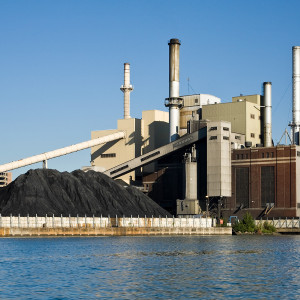The President is scheduled to personally present new regulations requiring carbon dioxide emissions be reduced at existing power plants, and you need to see the facts below. The President couldn’t pass a national carbon tax. Enough legislators understood taking unilateral action to lower carbon dioxide emissions would not solve anything but would make the United States less competitive in global markets. The Environmental Protection Agency (EPA) can write standards but the states must write the implementation rules.
“We have to act now as 97% of scientists agree we already face catastrophic extreme weather from manmade greenhouse gas” – The source of the 97% is vague and depends on repeating it enough that you begin to believe it. Most scientists agree man is increasing carbon dioxide levels and this will probably cause some increase in temperatures. Most do not agree there is a link with extreme weather events or we face a near term crisis. In fact, US satellite data show temperatures have not increased in seventeen years, a period that saw greenhouse gas increase 34%. The US Energy Information Agency reports US emissions have been reduced 9% since 2007 while the rest of the world is up 10%.
“The Environmental Protection Agency (EPA) has made a thorough review” – The Administrator of the EPA has the authority to determine what science is used to calculate standards and how rules will be developed and applied so the books are cooked against using coal for electric generation.
“These Standards will cost only $10 billion for implementation but will save us a $100 billion so it’s a good deal” – Our review of recent regulations indicates the EPA will most likely exaggerate indirect benefits based on fewer premature deaths from fine particle air pollution. Using less coal incidentally reduces fine particle emission. The problem with that is Air Quality Standards are already set to a level that will not cause harm in even sensitive groups such as asthmatics and those standards are being met by a wide margin. The EPA will ignore the Air Quality Standards and assume fewer deaths from any level of fine particle reduction. Plants need carbon dioxide to grow so higher levels means tens of billions of dollars of increased crop production which should offset most of the exaggerated benefits associated with carbon dioxide reduction.
“These standards are fair” – Red states with a high concentration of coal fired plants providing power to the rest of the country will bear most of the cost. Energy importing blue states with expensive requirements for wind and solar power, and existing carbon taxes will be rewarded.
“This plan is flexible and won’t require a carbon tax” – The options will probably include switching fuels from coal to natural gas or wind and solar, requiring energy efficiency improvements, using carbon sequestration, or using a carbon tax and trade program. Electric grid reliability is already in danger during cold snaps as natural gas for home heating is given preference over electric generation. Until more pipelines are built we should avoid further fuel switching. Sequestration is unproven and expensive. Proponents will likely argue carbon taxes are the easiest solution to implement, and the revenue could be used for efficiency programs. In reality, most states will be forced into carbon tax and trade programs, the President’s real intent. Unfortunately, we have six years experience with a nine state Regional Greenhouse Gas Initiative (RGGI) to prove the carbon tax and trade model doesn’t work. Our review showed RGGI had no success in either reducing carbon dioxide emissions, or in increasing energy efficiency, and will cost electric customers $3.3 billion extra between now and 2020 (RGGI, Inc estimate). Coal fired power plants closed because of other EPA regulations, and coal plants switched fuels because of lower cost natural gas, not because of RGGI. Most of the energy efficiency projects funded by RGGI had no post project audits to confirm the energy savings were real, and there was no accounting for “free riders” or the “rebound effect”. Free riders accept grants but would have done projects anyway. Rebounders might install an energy efficient heating unit but then keep their homes warmer.

